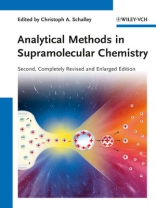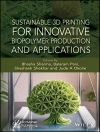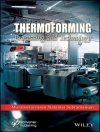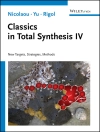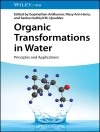The second edition of ‘Analytical Methods in Supramolecular Chemistry’ comes in two volumes and covers a broad range of modern methods and techniques now used for investigating supramolecular systems, e. g. NMR spectroscopy, mass spectrometry, extraction methods, crystallography, single molecule spectroscopy, electrochemisty, and many more. In this second edition, tutorial inserts have been introduced, making the book also suitable as supplementary reading for courses on supramolecular chemistry. All chapters have been revised and updated and four new chapters have been added.
A must-have handbook for Organic and Analytical Chemists, Spectroscopists, Materials Scientists, and Ph.D. Students in Chemistry.
From reviews of the first edition:
‘This timely book should have its place in laboratories dealing with supramolecular objects. It will be a source of reference for graduate
students and more experienced researchers and could induce new ideas on the use of techniques other than those usually used in the laboratory.’
Journal of the American Chemical Society (2008) VOL. 130, NO. 1 doi: 10.1021/ja0769649
‘The book as a whole or single chapters will stimulate the reader to widen his horizon in chemistry and will help him to have new ideas in his research.’
Anal Bioanal Chem (2007) 389:2039-2040 DOI: 10.1007/s00216-007-1677-1
Tabela de Conteúdo
Preface
Volume One
INTRODUCTION
Some Historical Remarks on Supramolecular Chemistry
The Noncovalent Bond: a Brief Overview
Basic Concepts in Supramolecular Chemistry
Conclusions: Diverse Methods for a Diverse Research Area
QUANTITATIVE ANALYSIS OF BINDING PROPERTIES
Theoretical Principles
A Practical Course of Binding Constant Determination by UV/Vis Spectroscopy
Practical Course of Action for NMR Spectroscopic Binding Constant Determination
Other Important Examples with Practical Actions of Data Treatment
Conclusion
ISOTHERMAL TITRATION CALORIMETRY IN SUPRAMOLECULAR CHEMISTRY
Introduction
The Thermodynamic Platform
Acquiring Experimental Calorimetric Data
Extending the Measurement Range
Perspectives
EXTRACTION METHODS
Introduction
The Extraction Technique
The Technical Process
The Extraction Equilibrium
Principles of Supramolecular Extraction
Examples of Supramolecular Extraction
Conclusions and Future Perspectives
MASS SPECTROMETRY AND GAS PHASE CHEMISTRY OF SUPRAMOLECULES
Introduction
Instrumentation
Particularities and Limitations of Mass Spectrometry
Beyond Analytical Characterization: Tandem MS Experiments for the Examination of the Gas-Phase Chemistry of Supramolecules
Selected Examples
Conclusions
DIFFUSION NMR IN SUPRAMOLECULAR CHEMISTRY AND COMPLEXED SYSTEMS
Introduction
Concepts of Molecular Diffusion
Measuring Diffusion with NMR
Applications of Diffusion NMR in Supramolecular Chemistry: Selected Examples
Advantages and Limitations of High Resolution Diffusion NMR
Diffusion NMR and Chemical Exchange
Diffusion Modes and Signal Decay in Diffusion MR Experiments
Applications of Diffusion NMR in Complex Systems
Summary and Outlook
PHOTOPHYSICS AND PHOTOCHEMISTRY OF SUPRAMOLECULAR SYSTEMS
Introduction
Spectrophotometry and Spectrofluorometry
Time-Resolved Fluorescence Techniques
Fluorescence Anisotropy
Transient Absorption Spectroscopy
Concluding Remarks
CIRCULAR DICHROISM SPECTROSCOPY
Basic Considerations
Measurement Techniques (Methodology of CD Measurement)
Processing of Circular Dichroism Spectra
Theory
Examples of Vibrational Circular Dichroism Applications
Concluding Remarks
Volume Two
ELECTROCHEMICAL METHODS
Introduction
Basic Principles of Electrochemistry
Overview of Electrochemical Techniques
Electrochemical Analysis of Supramolecular Systems
Selected Examples
Concluding Remarks
CRYSTALLOGRAPHY AND CRYSTAL ENGINEERING Introduction
Crystallography
Crystal Engineering
Methyl-Resorcinarene as a Crystal Engineering Target
Concluding Remarks
SCANNING PROBE MICROSCOPY
Introduction: What Is the Strength of Scanning Probe Techniques?
How Do Scanning Probe Microscopes Work?
Which Molecules Can Be Studied?
What Results Have Been Obtained in the Field of Supramolecular Chemistry?
SINGLE-MOLECULE FORCE SPECTROSCOPY OF SUPRAMOLECULAR COMPLEXES
Introduction and Motivation
Functionally Immobilizing Supramolecules
Supramolecular Interactions Investigated by AFM-SMFS
Summary and Outlook
CONFOCAL LASER SCANNING MICROSCOPY: A VERSATILE SPECTROSCOPIC TOOL FOR THE INVESTIGATION OF MOLECULAR GELS
Introduction: Molecular Gels
Methods Classically Used for the Characterization of Molecular Gels
Confocal Laser Scanning Microscopy (CLSM)
Conclusion
TRANSMISSION ELECTRON MICROSCOPY (TEM) OF RADIATION SENSITIVE SUPRAMOLECULAR ARCHITECTURES – STRATEGIES FOR A COMPREHENSIVE STRUCTURE CHARACTERIZATION
Introduction
Instrumentation
Contrast in TEM
Sample Preparation
Strategies and Examples to Characterize Supramolecular Structures by Complementary TEM Methods
THE CHARACTERIZATION OF SYNTHETIC ION CHANNELS AND PORES
Introduction
Methods
Characteristics
Structural Studies
Concluding Remarks
THEORETICAL METHODS FOR SUPRAMOLECULAR CHEMISTRY
Introduction
A Survey of Theoretical Methods
Standard Classification of Intermolecular Interactions
Qualitative Understanding and Decomposition Schemes
General Mechanism for a Static, Step-Wise View on Host-Guest Recognition
Conclusions and Perspective
Index
Sobre o autor
Christoph A. Schalley is professor for organic chemistry and modular synthesis at the Free University of Berlin since October 2005. He received his Ph D under the supervision of Helmut Schwarz at the Technical University of Berlin followed by a postdoctorate with Julius Rebek, Jr. at The Scripps Research Institute in California. In 1999 he joined the University of Bonn as a Liebig-Fellow of the Fonds der Chemischen Industrie to start his own independent research group. Professor Schalley has authored more than 150 publications and (co-)edited several books on mass spectrometry, dendrimers and template synthesis. He is recipient of Dozentenstipendium of the Fonds der Chemischen Industrie (2004) and the Mattauch-Herzog award of the German Society for Mass Spectrometry (2006). His research interests also include mass spectrometric characterization and gas-phase chemistry of supramolecules.
